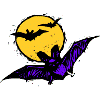Wildlife Disease and Zoonotics

Zoonotics and Wildlife Disease: Publications
Document Type
Article
Date of this Version
2010
Abstract
Determining the effect of an invasive species on enzootic pathogen dynamics is critical for understanding both human epidemics and wildlife epizootics. Theoretical models suggest that when a naive species enters an established host–parasite system, the new host may either reduce (‘dilute’) or increase (‘spillback’) pathogen transmission to native hosts. There are few empirical data to evaluate these possibilities, especially for animal pathogens. Buggy Creek virus (BCRV) is an arthropod-borne alphavirus that is enzootically transmitted by the swallow bug (Oeciacus vicarius) to colonially nesting cliff swallows (Petrochelidon pyrrhonota). In western Nebraska, introduced house sparrows (Passer domesticus) invaded cliff swallow colonies approximately 40 years ago and were exposed to BCRV. We evaluated how the addition of house sparrows to this host–parasite system affected the prevalence and amplification of a bird-associated BCRV lineage. The infection prevalence in house sparrows was eight times that of cliff swallows. Nestling house sparrows in mixed-species colonies were significantly less likely to be infected than sparrows in single-species colonies. Infected house sparrows circulated BCRV at higher viraemia titres than cliff swallows. BCRV detected in bug vectors at a site was positively associated with virus prevalence in house sparrows but not with virus prevalence in cliff swallows. The addition of a highly susceptible invasive host species has led to perennial BCRVepizootics at cliff swallow colony sites. The native cliff swallow host confers a dilution advantage to invasive sparrow hosts in mixed colonies, while at the same sites house sparrows may increase the likelihood that swallows become infected.


Comments
Published in Proc. R. Soc. B online (2010)